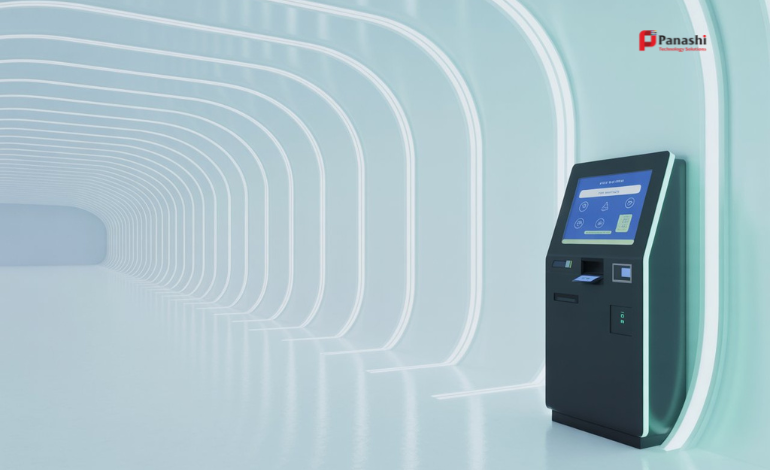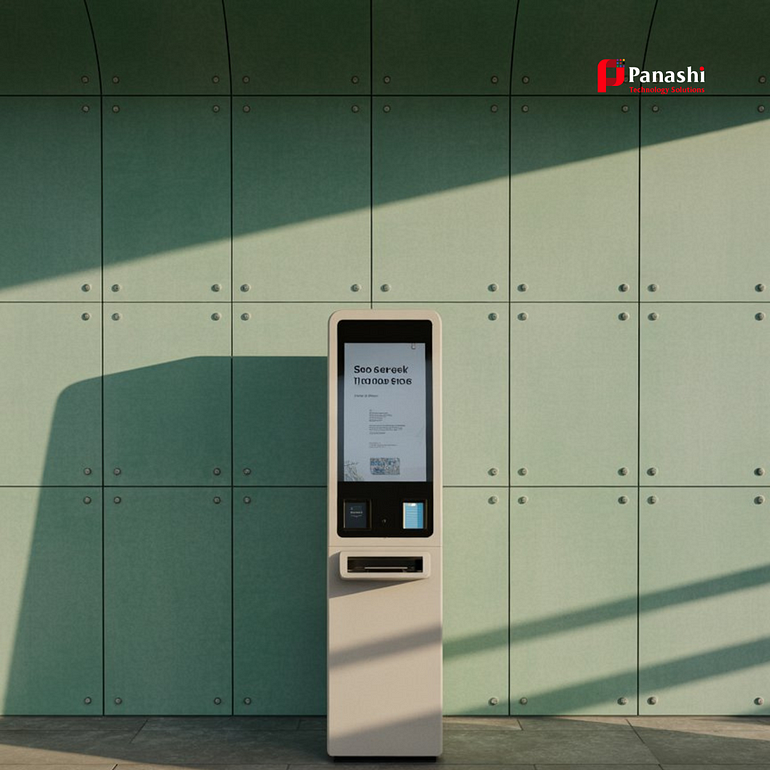
In today’s hyper-competitive business landscape, creating a memorable and consistent brand experience is more crucial than ever. With the growing adoption of self-service technologies, personalized kiosks are emerging as powerful tools for enhancing both brand recognition and customer engagement. These interactive machines are no longer just transactional devices — they are immersive brand touchpoints that influence how customers perceive your business.
When designed thoughtfully, kiosks can elevate customer experience, drive repeat interactions, and contribute significantly to business success. Whether placed in retail stores, airports, restaurants, or entertainment venues, a well-branded kiosk can serve as an extension of your identity, providing consistent and engaging brand experiences.
Understanding Your Brand Identity
Before diving into kiosk customization, it’s vital to have a clear understanding of your brand identity. Without this foundation, your efforts in personalization may fall flat or appear inconsistent.
Your brand identity encompasses everything from your logo and color scheme to your messaging and tone. These elements collectively communicate who you are, what you stand for, and why customers should trust you. Translating these principles into a kiosk design ensures that every interaction customers have with your machine reinforces your brand values.
Defining Your Brand’s Visual Elements
To align kiosks with your brand identity, start with refining your visual elements. This includes:
- Brand Colors: Choose colors that evoke the right emotions and are consistent across all touchpoints. These should be present in kiosk housing, UI backgrounds, and promotional materials.
- Logo Placement: Ensure your logo is clearly displayed but not overwhelming. Strategic placement — such as on the header, welcome screen, and transactional confirmations — helps reinforce brand recognition.
- Typography: Use fonts that align with your overall style. Whether your brand is playful, professional, or luxury-oriented, your typeface should match that tone across the kiosk UI and printed receipts.
Incorporating Brand Messaging Into the Kiosk Experience
The user interface should reflect your brand voice and tone. Whether formal, friendly, quirky, or minimalist, the wording of prompts, instructions, and thank-you messages should be consistent with your brand persona. For instance, a casual café might use phrases like “Hey there! Ready to order your favorite brew?” while a luxury hotel may opt for, “Welcome. How may we serve you today?”
Consistent messaging builds trust and reinforces brand familiarity, making each kiosk interaction feel like a natural extension of your brand environment.
Designing the Kiosk Aesthetics to Reflect Your Brand
Beyond software, the physical appearance of the kiosk plays a huge role in how users perceive it. A well-designed kiosk will not only attract more attention but will also communicate professionalism, quality, and alignment with the brand’s style.
Customizing Exterior and Hardware Features
Kiosk hardware can be customized to reflect your brand’s aesthetic preferences. You can personalize:
- Housing materials: Sleek metal for tech brands, rustic wood for organic food retailers, or glossy finishes for luxury services.
- Form factors and shapes: From compact countertop models to large freestanding towers, the kiosk shape should suit your space and brand context.
- Color themes: Match the kiosk’s exterior with your brand palette to ensure visual consistency.
- Accessories and add-ons: Integrated lighting, camera modules, or card readers can be placed in aesthetically pleasing and ergonomic ways that reflect thoughtful design.
Optimizing Digital Interface and User Experience
User interface (UI) is one of the most visible aspects of personalization. Every screen customers interact with should reflect your design principles:
- Screen layouts: Clean, intuitive layouts reduce friction and keep users focused.
- Icons and graphics: Use brand-themed illustrations, icon sets, and transition animations to enhance interaction.
- Animations and transitions: Smooth, engaging transitions can subtly convey brand sophistication and attention to detail.
- Interactive elements: Feedback sounds, micro-animations, and haptic responses can be used judiciously to add personality.
A well-optimized interface not only simplifies usage but also creates a memorable and enjoyable experience that drives repeat use.
Leveraging Technology to Enhance Brand Personalization
Modern kiosk systems go beyond static screens — they are dynamic, data-driven, and integrated with back-end systems. Leveraging technology is essential to achieve a high degree of personalization.

Implementing Custom Software and Applications
Off-the-shelf software often lacks the flexibility to support detailed branding. By investing in custom-built applications, you can:
- Reflect your unique workflow and brand aesthetics.
- Incorporate custom features such as language selection, customer profiles, or loyalty point tracking.
- Enable brand storytelling through videos, animations, and engaging micro-content.
Custom applications also offer more control over customer interaction, allowing your brand to stand out from competitors using generic solutions.
Utilizing Data and Analytics for Personalized Customer Interaction
Data is a key enabler of personalization. Kiosks equipped with analytics can adapt in real-time to user preferences. Here’s how:
- Personalized recommendations: Based on past interactions or popular trends.
- Targeted promotions: Display offers tailored to customer profiles or time of day.
- Behavioral tracking: Understand how users interact with your kiosk and optimize content accordingly.
When integrated with CRM or loyalty platforms, kiosks can remember preferences, greet users by name, and offer exclusive discounts — deepening the relationship between your brand and the customer.
Marketing and Promotion Through Branded Kiosks
Branded kiosks are not just operational tools — they are powerful marketing assets. When deployed strategically, they can attract new customers, engage existing ones, and boost brand visibility.
Incorporating Promotional Campaigns in Kiosk Content
Branded kiosks can serve as platforms for:
- Flash sales and discounts: Display countdown timers or QR codes for limited-time offers.
- Loyalty program sign-ups: Encourage users to register by offering instant rewards.
- Seasonal campaigns: Customize visuals and offers for festivals, local events, or global campaigns.
Dynamic content capabilities allow kiosks to evolve with your marketing calendar, keeping users engaged with fresh messaging and incentives.
Using Social Media and Interactive Features to Boost Engagement
Integrate kiosks with social media platforms to amplify engagement. For instance:
- Photo booths or video testimonials: Let users share branded content directly to their social profiles.
- Gamification: Include mini-games, quizzes, or contests that reward users with discounts or points.
- Hashtag campaigns: Encourage users to tag your brand or location in social posts for a chance to win.
These strategies not only increase foot traffic and sales but also extend your reach into digital spaces where potential customers are active.
Maintenance and Consistency of Brand Experience
Even the most beautifully designed kiosk can harm your brand if it falls into disrepair or shows outdated messaging. Maintenance is key to preserving the quality and consistency of your brand experience.
Updating Content and Visuals Regularly
Establish a content update schedule aligned with your marketing campaigns. This includes:
- Updating banners, menus, and promotions.
- Refreshing backgrounds and interactive elements to reflect seasonal or brand-wide updates.
- Ensuring language, currency, and contact information are always current.
Keeping your kiosk content fresh reinforces your commitment to quality and relevance.
Ensuring Hardware and Software Functionality
Technical issues like screen freezes, delayed responses, or software crashes can damage customer trust. Regularly:
- Perform diagnostics and preventive maintenance.
- Update firmware and software components.
- Replace worn-out peripherals like card readers or touchscreens.
A well-maintained kiosk not only functions better but reflects a brand that cares about professionalism and customer satisfaction.
Conclusion
Personalized kiosks are much more than interactive machines — they are dynamic brand ambassadors capable of transforming customer engagement. By aligning every visual, functional, and technical detail with your brand identity, you create a cohesive experience that builds trust, increases loyalty, and drives revenue.
From aesthetic design and custom software to promotional features and analytics-driven personalization, kiosks offer unparalleled opportunities for brands to connect with their customers in meaningful ways. Investing in kiosk customization is not just about convenience — it’s about creating a strategic advantage in a world where every brand interaction counts.
As technology continues to evolve, businesses that embrace personalized kiosk experiences will not only stay ahead of the curve but will also create lasting impressions that foster deeper customer relationships.
Comments
Post a Comment